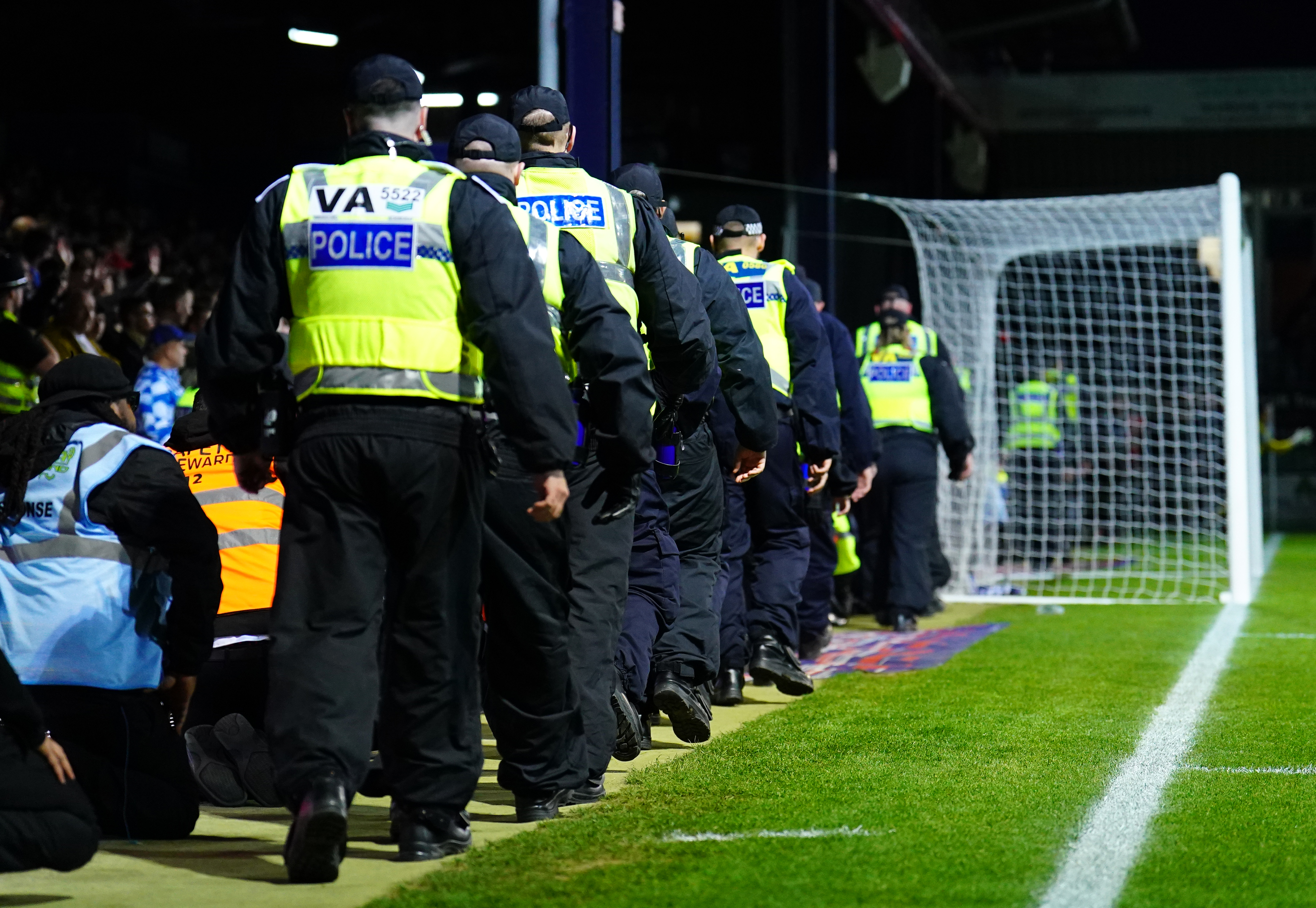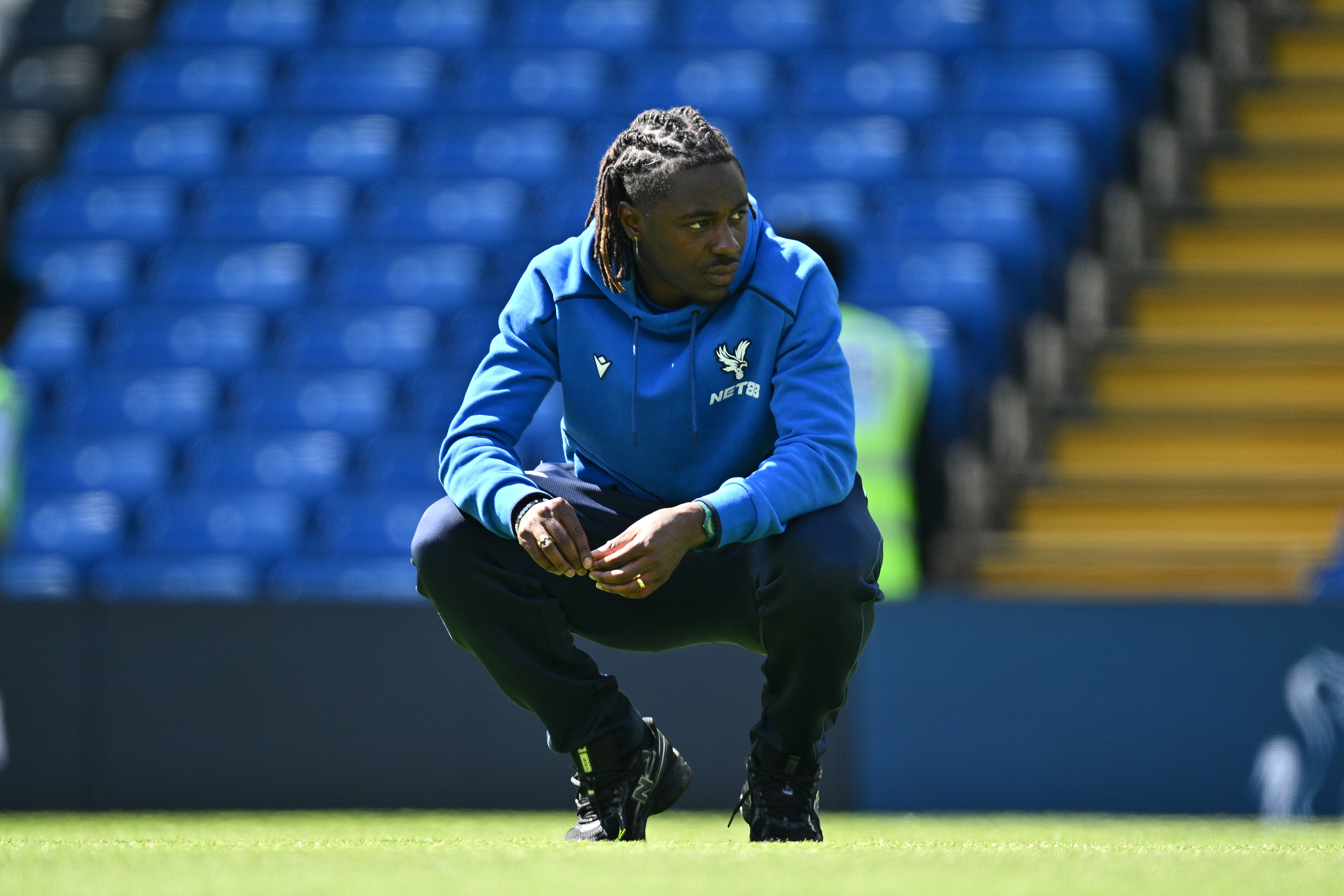What’s behind the rise in football disorder and how can it be tackled?

Crowd behaviour and the issue of player safety on the pitch has returned to the fore after a series of pitch invasions over recent weeks.
Here the PA news agency looks at what has happened, and how the authorities could look to tackle the problem.
What’s happened?

End-of-season matches in the Premier League and the EFL have been blighted by pitch invasions, with some fans confronting and even assaulting players and other club staff.
A Nottingham Forest fan headbutted Sheffield United player Billy Sharp earlier this week, and has already been jailed for 24 weeks.
Other incidents following matches at Everton, Northampton and Port Vale this week are also the subject of police investigations.
So is this all just connected to the excitement and emotion around clubs being promoted and relegated?
The best features, fun and footballing quizzes, straight to your inbox every week.

There has been a spike in pitch invasions over the last fortnight, but in truth disorder has been on the rise all season.
Data released by the UK Football Policing Unit earlier this year showed there had been a 36 per cent increase in reported incidents of disorder in the first half of the current campaign, compared to the same period of the 2019-20 season.
A Leicester fan received a jail sentence for invading the pitch and assaulting three Nottingham Forest players during an FA Cup tie in February, so this is not a new phenomenon.
What’s driving it?

Alcohol remains a factor, but police believe cocaine is increasingly fuelling football violence, with excessive consumption of the class a drug cited as a contributing factor in the disorder at last summer’s Euro 2020 final at Wembley in an independent report by Baroness Casey published last year.
The UK’s football policing lead, Chief Constable Mark Roberts, has welcomed the Government’s move this week to extend banning orders to cover those convicted of taking or selling class a drugs at matches.
Who pays for policing at football matches?

Forces can only claim policing costs back from clubs where they were incurred on land owned by the clubs – which in practical terms usually means inside stadiums. Costs incurred outside that area are borne by the taxpayer.
The cost of football policing for the 2019-20 season was £47.43m, of which £39.58m was unrecovered.
Chief Constable Roberts accepts that clubs cannot afford to deploy hundreds of officers “holding hands around the edge of the pitch” to tackle the problem of pitch invasions.
So what is the answer?

Certainly not perimeter fencing, which has been consigned to history in the English game following the 1989 Hillsborough disaster.
Roberts cited the physical measures in place at Wembley which served as a deterrent for pitch invasions as something clubs could look to invest in, which can be collapsed should it be necessary to evacuate fans on to the pitch in an emergency.
Alongside that, the answer could be tough custodial sentencing and the consistent imposition of banning orders for violence and drugs-related offences.
Why is this so important?

First and foremost, to ensure the safety of those on and around the pitch, and also of other spectators. But it is also vital to tackle this if England wants to host major international events in the future.
The UK and Ireland are in pole position to host Euro 2028, but any perception at UEFA of a return to the bad old days of the 1970s and the 1980s could do the bid serious damage.
UEFA president Aleksander Ceferin said at the organisation’s Congress earlier this month that the violence at last summer’s Euro 2020 final was unacceptable and could never be repeated.
